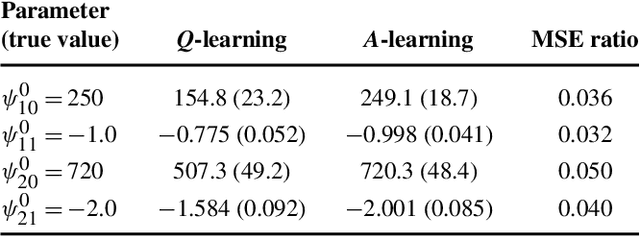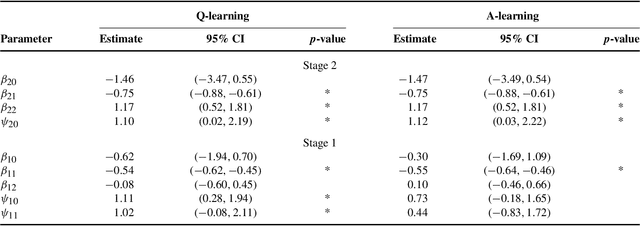$Q$- and $A$-Learning Methods for Estimating Optimal Dynamic Treatment Regimes
Paper and Code
Feb 03, 2015



In clinical practice, physicians make a series of treatment decisions over the course of a patient's disease based on his/her baseline and evolving characteristics. A dynamic treatment regime is a set of sequential decision rules that operationalizes this process. Each rule corresponds to a decision point and dictates the next treatment action based on the accrued information. Using existing data, a key goal is estimating the optimal regime, that, if followed by the patient population, would yield the most favorable outcome on average. Q- and A-learning are two main approaches for this purpose. We provide a detailed account of these methods, study their performance, and illustrate them using data from a depression study.
* Statistical Science 2014, Vol. 29, No. 4, 640-661 * Published in at http://dx.doi.org/10.1214/13-STS450 the Statistical
Science (http://www.imstat.org/sts/) by the Institute of Mathematical
Statistics (http://www.imstat.org)
 Add to Chrome
Add to Chrome Add to Firefox
Add to Firefox Add to Edge
Add to Edge